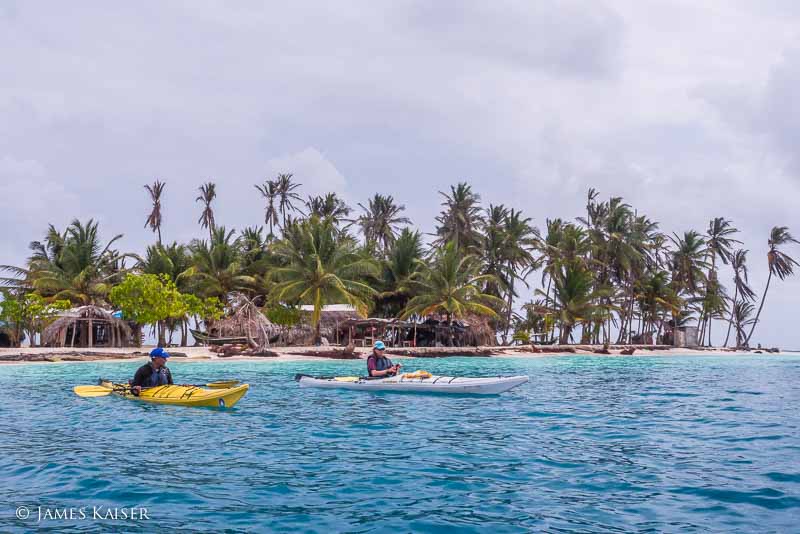
Lying off the northern coast of Panama, the San Blas archipelago is one of the jewels of the Caribbean. Over 300 tiny islands are dotted with palm trees and surrounded by white sand beaches. Coral reefs are abundant, and the water varies from brilliant turquoise to royal blue. In March 2015 I sea kayaked the San Blas Islands with my father and a group of friends.
The San Blas Islands belong to the indigenous Guna Yala people. In 1925 the Guna Yala rebelled against Panamanian authorities, and they have governed the islands autonomously ever since. Isolated from much of the outside world, the Guna (also spelled Kuna or Cuna) continue to live largely traditional lifestyles. Men fish from dugout canoes, women wear richly patterned dresses, and families live in thatch huts filled with hammocks. For visitors to the San Blas Islands, the combination of rich Guna culture and untouched natural beauty make it one of the most fascinating destinations in Central America.
Sea Kayaking the San Blas Islands
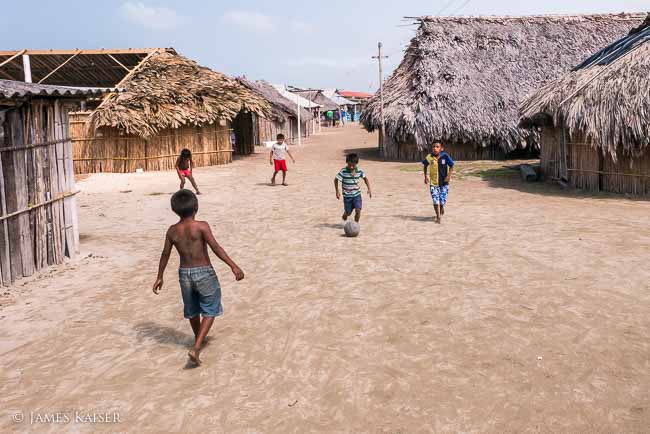
From Panama City we flew to the eastern San Blas Islands, where we spent the night on Isla Tigre (“Tiger Island”). Isla Tigre is home to about 800 Guna, mostly women and children. Many of the men have moved to larger towns in search of work to support their families.

Guna women still dress in traditional clothing, which consists of patterned dresses, calves covered in small beads and gold nose rings. The girl is showing off a “mola,” a traditional Kuna design that covers the front of Kuna dresses.
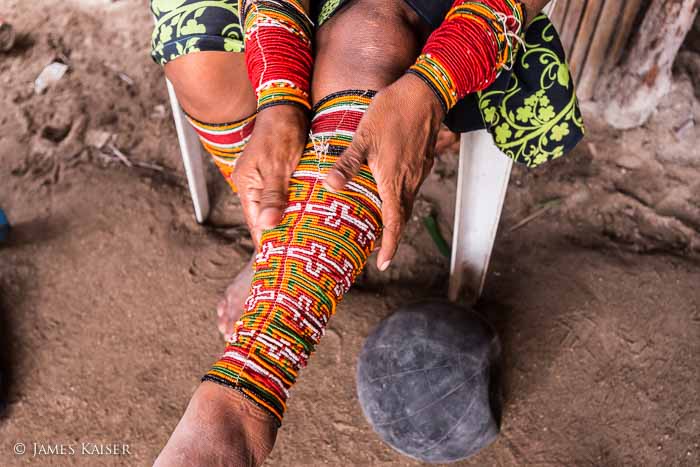
Guna women wrap their calves in small, colorful beads organized in intricate patterns.
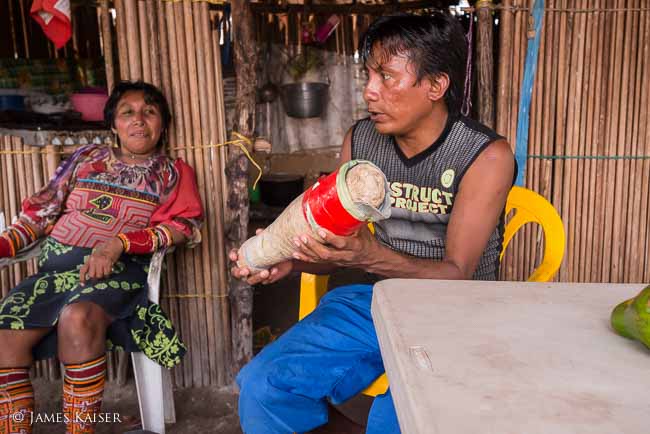
A Guna man shows the wooden model his wife uses to make bead patterns for her calves.
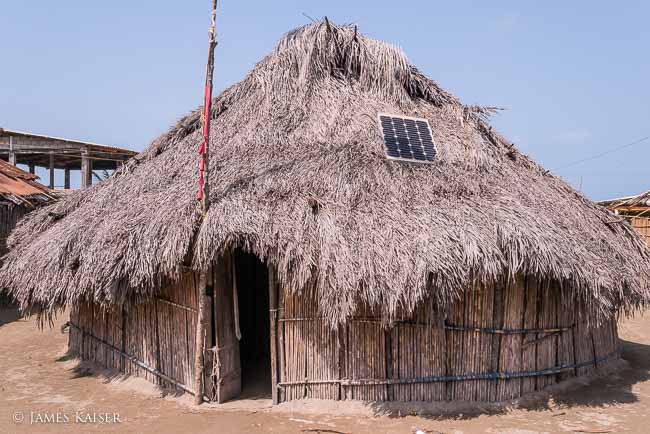
The Guna on Isla Tigre still live in thatch huts, but new technologies like this solar panel (used to power light bulbs and charge mobile phones) are changing traditional life.
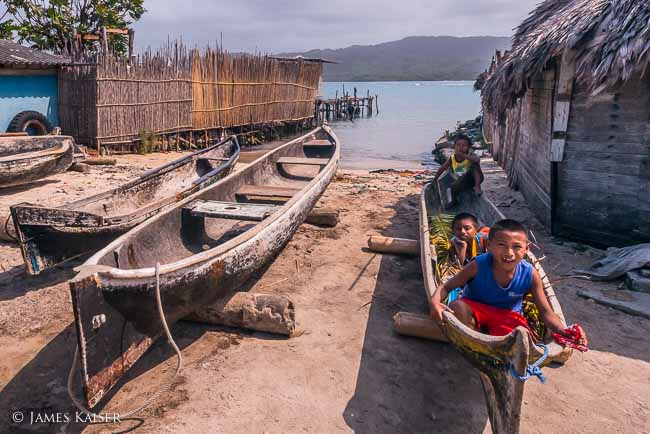
Dugout boats, called cayucos, are used for fishing and travel among the San Blas islands.
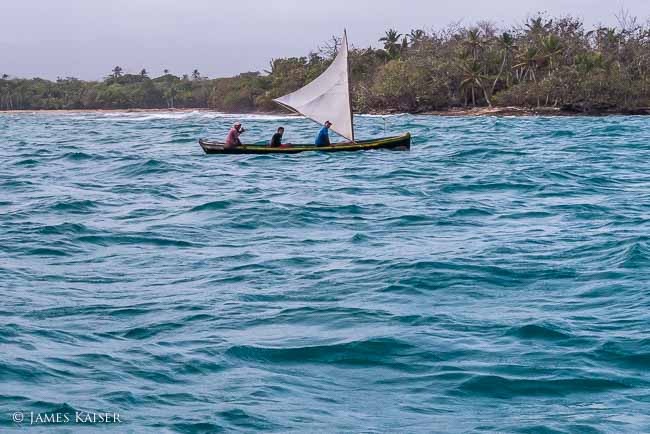
When the wind blows, the men raise small sails.
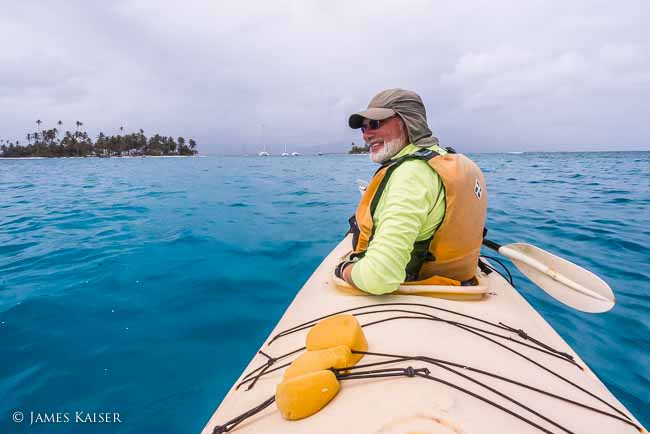
In the morning we set out from Isla Tigre. That’s my dad, still going strong at 71! For the next six days we kayaked from island to island, camping on white sand beaches.
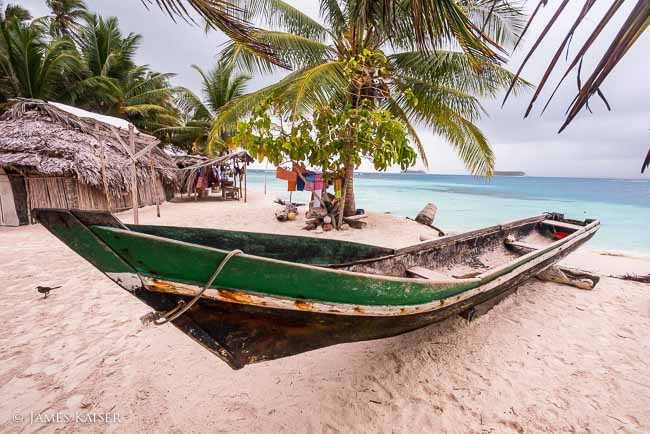
After paddling all day we arrived at Diadup. In the Guna language, Dup (sometimes spelled Dub) means “Island.”
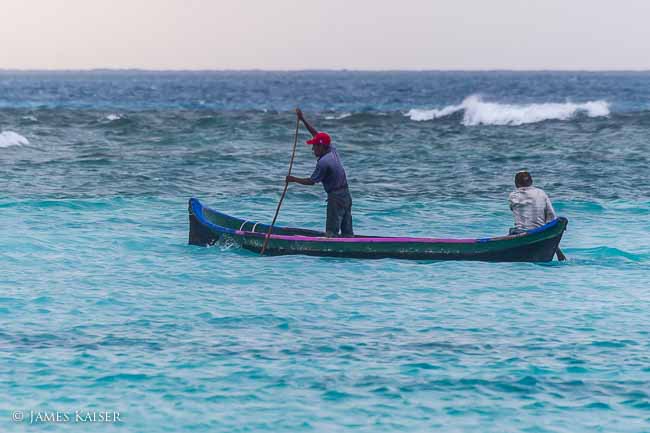
In the morning two Guna men paddled out to fish. Throughout the trip we bought fresh seafood from Guna fishermen.

From Diadup we paddled west, kayaking past a series of beautiful islands and coral reefs. Through the clear water we saw giant starfish on the seafloor. At one point two rays glided beneath our kayak.
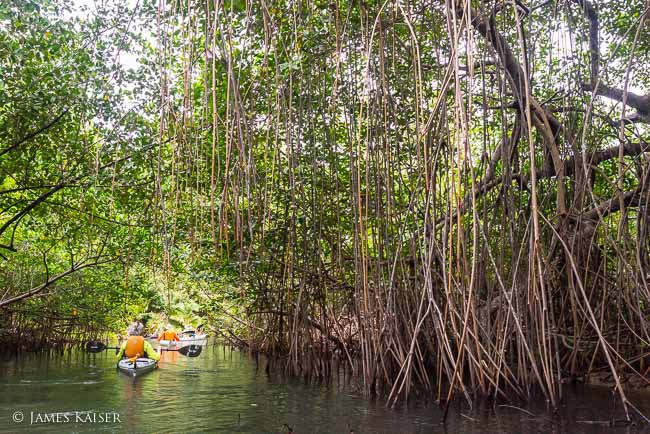
Taking a break from paddling in the open water to explore a mangrove estuary.

After a long day of paddling we arrived at Sirchirdup, our home for the next two nights.

Shortly after our arrival a Guna family from a neighboring island came to visit. The women displayed their beautiful molas.
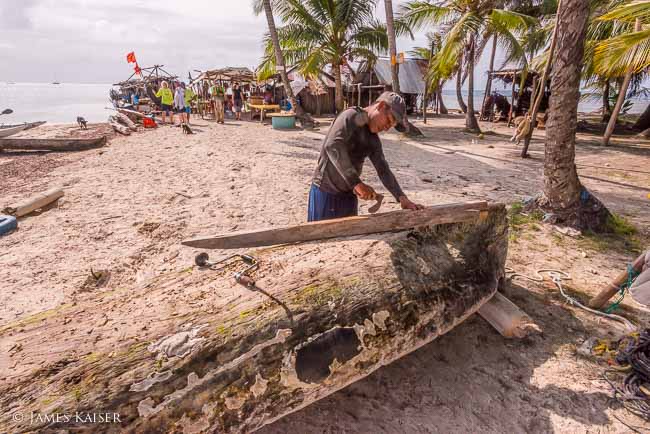
The next day we paddled to a nearby island. This man was repairing his dugout boat.

In the morning our Guna guide Daniel taught us how to play the flute and dance Guna-style.
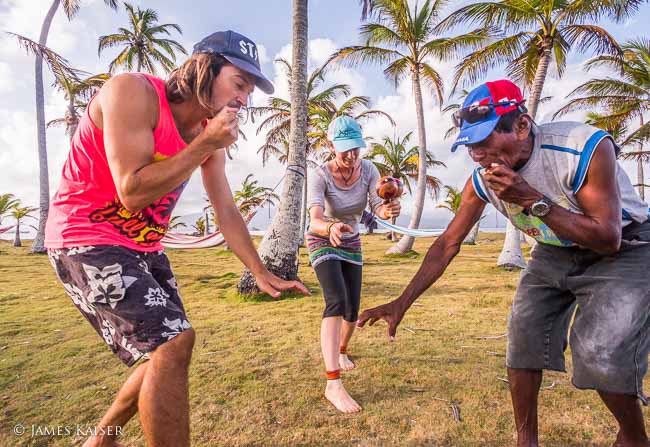
Daniel taught us the Guna Crab Dance, which involves lots of quick grabbing gestures. During the dance the Guna blow into crab claws, using them like whistles.
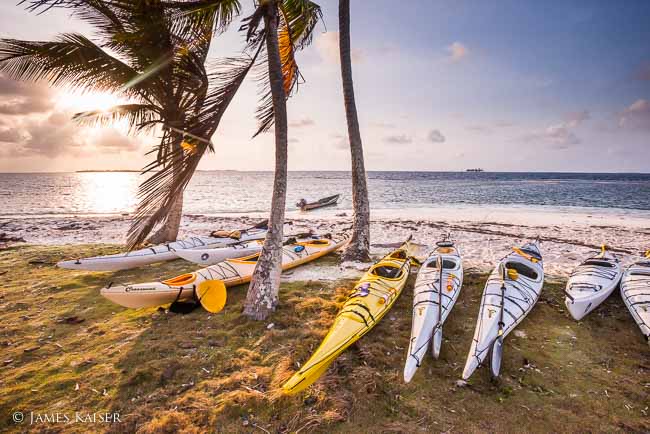
Sunset on Sichirdup.
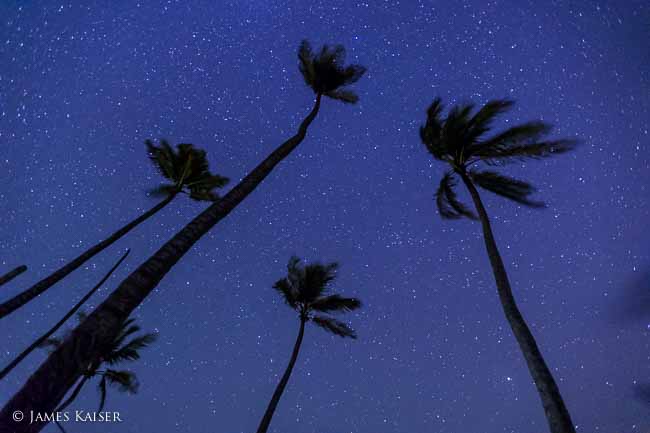
The stars were stunning at night. There is virtually no light pollution in the San Blas Islands.
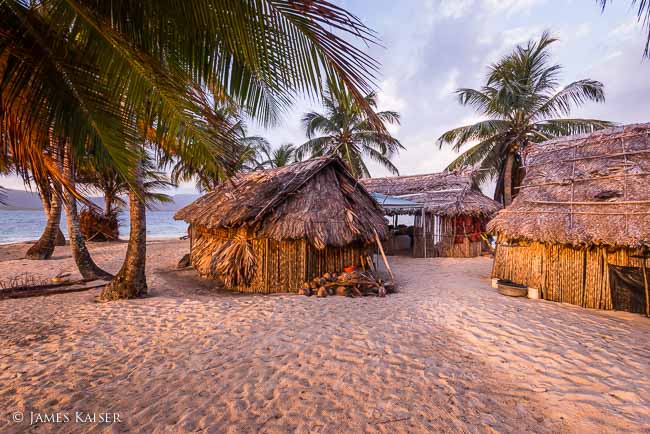
After two nights on Sichirdup we paddled to Bidirdup, where we spent the final two nights.
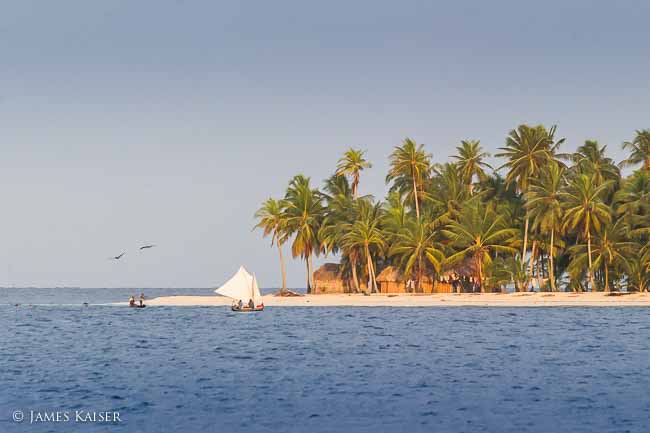
Lying just west of Sichirdup was another island with a small Guna village.

A young Guna boy holds a pet parakeet.
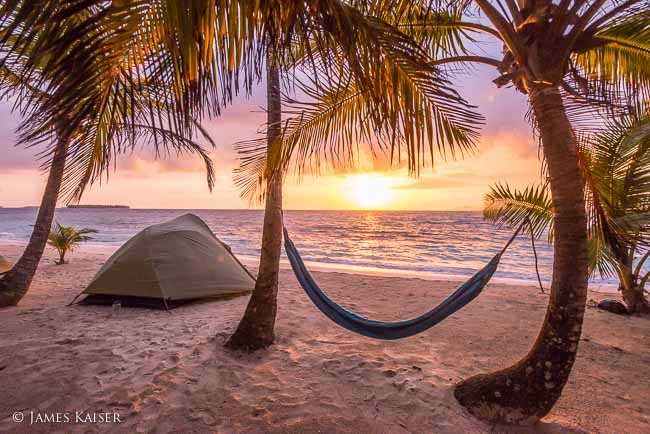
One last day in paradise.